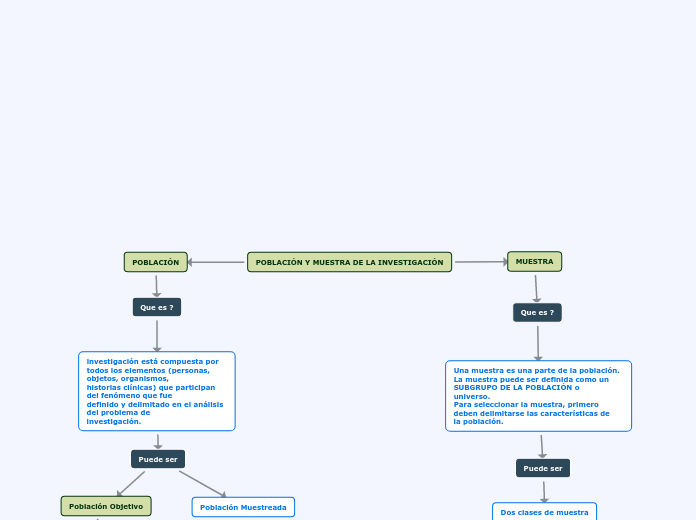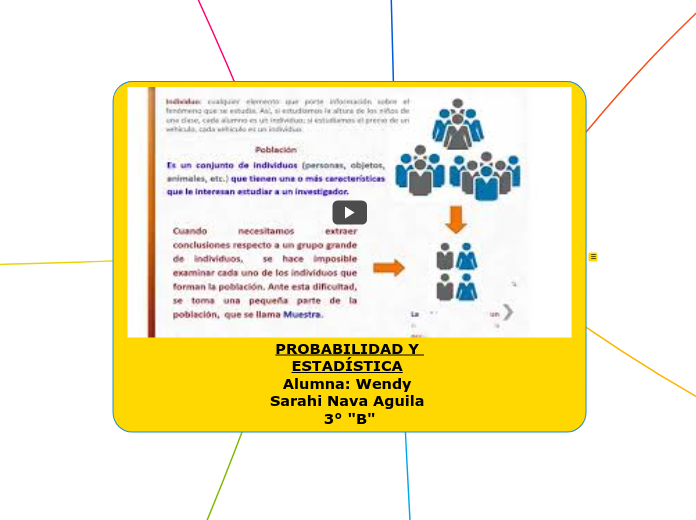permiten conocer la probalidad de
cada individuo
Name the character
Type in the name of the character whose change throughout the story you are going to analyze.
Example: Nick Carraway.
NO PROBABILISTICO
Character's behavior
Think of the character's behavior at the beginning of the story and look for the way it changed throughout the story.
Accidental o consecutivo
se
Reclutar casos hasta que
se completa el número
de sujetos necesario para
completar el tamaño de
muestra deseado, se elegi
de manera casual
eleccionar los primeros
50 incluibles que lleguen
al servicio de urgencias
del Hospital Regional
de Temuco
Intencional
Seleccionar casos
característicos de una
población limitando la
muestra sólo a estos
casos. Se utiliza en
escenarios variados y pequeños
seleccionar a aquellos
que más convengan al
equipo investigador, para
conducir la investigación.
Por conveniencia
permite
Seleccionar casos
accesibles que
acepten ser incluidos.
Esto, fundamentado
en la conveniente
accesibilidad y
proximidad de
los sujetos para
el investigador.
EJEMPLO
Personas,solamente aquellos
que se encuentren hospitalizados
en el Hospital Regional de Temuco
PROBABILISTICO
Character's feelings
Focus on the way the character's feelings are presented at the beginning and at the end of the story, while explaining why they have changed.
Aleatorio simple
A partir de la
Población blanco,
se seleccionan al
azar el número de
sujetos necesario
para completar la
muestra necesaria
a estudiar.
Aleatorio sistemático
Cuando el criterio de
distribución de los
sujetos a estudio
en una serie es tal,
que los más similares
tienden a estar más
cercanos.
EJEMPLO:
¿Cuál es la muestra
necesaria para
establecer la
prevalencia de cambios
inflamatorios en biopsias
hepáticas de pacientes
con CA? seleccionar
aquellos que ingresan
los días impares del mes,
o aquellos cuya primer
dígito del RUT sea par,
hasta completar la
muestra estimada
Aleatorio estratificado
se define como estrato a
los subgrupos de unidades
de análisis que difieren en
las características
que van a ser analizadas
Por
conglomerados
Consiste en elegir
de forma aleatoria
ciertos barrios
dentro de una
región, ciudad,
comuna, etc.,
para luego
elegir unidades
más pequeñas
como cuadras,
calles, etc.
y finalmente
otras más
pequeñas, como
escuelas,
consultorios,
hogares
The reason for the change of feelings
What caused the character to change the first belief you mentioned? Type in the reason for the change.
Example: disgust towards the lack of morality in the Buchanan family.
TECNICAS DE MUESTREO
Title
Type in the title and author of the literary work that introduces the character.
Example: The Great Gatsby, by F. Scott Fitzgerald.









